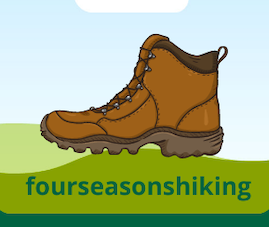Altitude hiking refers to trekking at elevations typically above 8,000 feet (2,438 meters). The higher you go, the thinner the air, which uniquely impacts the body. This trailblazing type of hiking isn’t just physically demanding; it also tests mental endurance and resilience.
The differences between altitude hiking and other forms of hiking are stark. While typical hikes may involve navigating through forests or deserts at relatively low elevations, altitude hikes take you to higher grounds where oxygen levels drop. Here, it’s not just a stroll—every step feels more intense, and the environment poses unique challenges.
Popular destinations for altitude hiking include iconic locations like the Himalayas in Nepal, the Andes in South America, and the Rockies in North America. Each place offers breathtaking views and a chance to experience nature from a new perspective. Elevation gain within these ranges can vary significantly, providing novice and seasoned trekkers opportunities.
The impact on the human body at high altitudes can’t be overstated. As you ascend, lower oxygen levels mean your body has to work harder to function. This can lead to symptoms like shortness of breath, fatigue, and even altitude sickness, ranging from mild headaches to severe complications. Knowing how your body reacts and learning to listen to it is crucial for a successful hike.
Preparing Physically and Mentally for High-Altitude Hikes
Training for altitude hikes goes beyond traditional workouts. Building stamina and strength is essential. Incorporate cardio exercises like running, swimming, or cycling into your routine. Strength training focusing on the legs, core, and back can make a significant difference. Simulating elevation in your training, like hiking local hills or using a stair climber, preps your body for the low-oxygen environment.
Mental preparation is just as critical. High-altitude hiking is as much a mental challenge as it is physical. Develop a positive mindset and stress management techniques. Visualization strategies can help you mentally prepare for the grueling parts of the hike. Knowing that the climb will test your mental endurance allows you to approach it with patience and determination.
Acclimatization is adjusting to the lower oxygen levels at high altitudes. Take it slow during your ascent. Spend a few days at mid-elevations before tackling higher altitudes. Your body needs time to produce more red blood cells to carry oxygen more efficiently. Proper acclimatization reduces the risk of altitude sickness and other complications.
Recognizing and managing altitude sickness is crucial. Symptoms include headaches, nausea, dizziness, and fatigue. If you experience these symptoms, it’s essential to stop, rest, and hydrate. If symptoms persist, descend to a lower altitude. Carrying medication like acetazolamide can help, but always consult a healthcare professional before your trip.
Combining physical and mental preparation with proper acclimatization sets a solid foundation for a successful altitude hike. Preparing well ensures you face the mountain with confidence and resilience.
Essential Gear and Nutrition for Altitude Hiking
Let’s talk gear: Elevation demands specific equipment to ensure safety and comfort. Layers are vital—temperatures can fluctuate drastically at high altitudes. Start with moisture-wicking base layers, add insulating mid-layers like fleece, and finish with a weather-resistant outer layer to guard against wind and rain. Investing in good hiking boots with proper ankle support is non-negotiable. Your feet will thank you on those uneven, rocky trails.
Hydration becomes a challenge at high altitudes. The air is thinner and drier, causing you to dehydrate more quickly. Carry a hydration system, such as a water bladder with a sip tube, to keep sipping as you hike. I also recommend water purification tablets or a filter—you should always have access to clean water.
Nutrition needs to change with altitude. Pack calorie-dense foods that provide sustained energy. Think nuts, dried fruits, energy bars, and jerky. High protein and good fats give your muscles the fuel they need. Avoid heavy, greasy foods that can upset your stomach at higher elevations.
Packing smart is an art. Essentials like a headlamp with extra batteries, a first aid kit, and multi-tool are crucial. Remember to bring sun protection, including sunglasses and sunscreen. UV exposure increases with altitude, putting you at higher risk for sunburn and snow blindness.
High-altitude cooking presents its challenges. The lower atmospheric pressure means water boils at a lower temperature, making cooking times longer. Opt for pre-cooked meals or foods that require minimal cooking. Lightweight stoves and fuel canisters designed for high elevation are ideal.
Proper gear and nutrition preparation keep you focused on the journey rather than the obstacles. Equip yourself right, and you can take every step with confidence.
Safety Tips and Precautions for Altitude Hiking
Weather patterns at high altitudes can change rapidly, and planning accordingly is crucial. Always check the weather forecast before your hike. Carry a reliable weather radio or a satellite communication device to receive updates while on the trail.
Navigation becomes more complex as you ascend. Maps and a GPS device are essential for staying on course. In case technology fails, brush up on traditional navigation skills, such as using a compass and reading topographic maps.
First aid knowledge can be a lifesaver. Carry a comprehensive first aid kit and familiarize yourself with basic procedures, such as treating blisters and cuts and managing hypothermia. Knowing how to recognize and respond to altitude sickness is also vital.
Emergency protocols should be clear and practiced. Create an emergency plan with your hiking group. This plan should include identifying the nearest medical facilities, carrying a whistle for signaling, and establishing check-in routines with someone back home.
Leave No Trace principles ensure you respect the natural environment. Pack out all trash, minimize campfire impact, and stick to established trails to avoid damaging fragile ecosystems. Respect wildlife and other hikers to preserve the beauty and integrity of the trails.
Personal Stories and Insights from Experienced Hikers
Stories from seasoned altitude hikers provide valuable insights. These individuals share how they tackled the physical and mental challenges of high-altitude hiking.
Challenges often come with unexpected twists. One hiker might recount the time they faced a sudden snowstorm, detailing how they managed to find shelter and stay safe.
Another might talk about battling altitude sickness, explaining the steps they took to acclimatize better on their next hike.
Inspirations emerge from hearing about successful treks. A hiker’s story of summiting a peak after several failed attempts can be incredibly motivating. These narratives often highlight the persistence and grit required.
Practical tips from these stories are gold. Learning how others packed, prepared, and coped with difficulties can offer new strategies for your hikes.
Lessons learned emphasize what to avoid and what to prioritize. Whether it’s underestimating the weather or overpacking, these shared experiences guide newcomers and seasoned hikers alike.
Involvement in the hiking community also stands out. Many experienced hikers mention how joining local hiking clubs or online forums provided support, resources, and companionship.
Maximizing the Experience: Making the Most of Your Altitude Hike
Capturing the adventure is a great way to commemorate your hike. Photography tips include using a lightweight, weather-resistant camera. Recognize the best light conditions, often in the early morning and late afternoon, for capturing those stunning landscapes. Journaling your journey also provides a rich, detailed memory to revisit and share.
Connecting with nature at high altitudes offers a unique sense of tranquility. Practice mindfulness by taking intentional breaks to absorb the breathtaking surroundings. Engage all your senses—the crisp air, the sounds of nature, the vast panoramas—to immerse yourself in the experience fully.
Exploring cultural and historical aspects enriches your adventure. Research the local history and traditions of the area you’re hiking in. Interacting with local communities provides insight and supports the region’s economy. You might find hidden gems, such as historical landmarks or culturally significant sites, that add depth to your journey.
Making connections extends beyond the trail. Joining hiking communities and attending events can enhance your experience. Sharing stories, tips, and experiences with fellow hikers fosters a sense of camaraderie. Building these connections can offer lifelong friendships and a support network for future hikes.


Great post! I never realized how much preparation goes into altitude hiking, both physically and mentally. It’s amazing how important acclimatization and gear choices are to handle the challenges of higher elevations. The tips on nutrition and hydration were really helpful, especially since I didn’t know dehydration happens faster up there. Definitely inspires me to think about tackling a mountain adventure in the future!
Thank you, I appreciate your interest and enthusiasm!
Best wishes,
Lonnie
HI!
Great post on preparing for altitude hikes. I can remember a time that I was with a group of high school seniors on their senior trip. We were in Colorado in the Sangre de Cristo Mountains. We had been several days in the area at mid-altitude levels and had done other activities, including a day of skiing at Arapahoe Basin. The director of the camp where we stayed said this particular mountain hike to the peak was a good day hike. It was steep but not necessarily rugged. We didn’t do much planning, except taking a sack lunch and water. One thing we didn’t have was any way to communicate with the base camp in case we needed help. This was in 1988.
It was an enjoyable hike, up to the point when a female student passed out and we couldn’t revive her enough to have her walk back down. During the hike we could never get her to drink water. She said she didn’t like water. Our hike turned crazy that day as we sent runners back down to camp to get help, which never came due to a break down in communication. We were at very high elevation, above the trees. A male student and I finally ran down to camp and informed the director. He immediately dispatched a help team with a stretcher and supplies to bring the rest of the team down. They got back to camp around midnight.
That story underscores your post about the importance of planning and ensuring everyone in the group knows the dangers and how to prepare!
– Scott
Thank you for your experience, Scott!
Lonnie